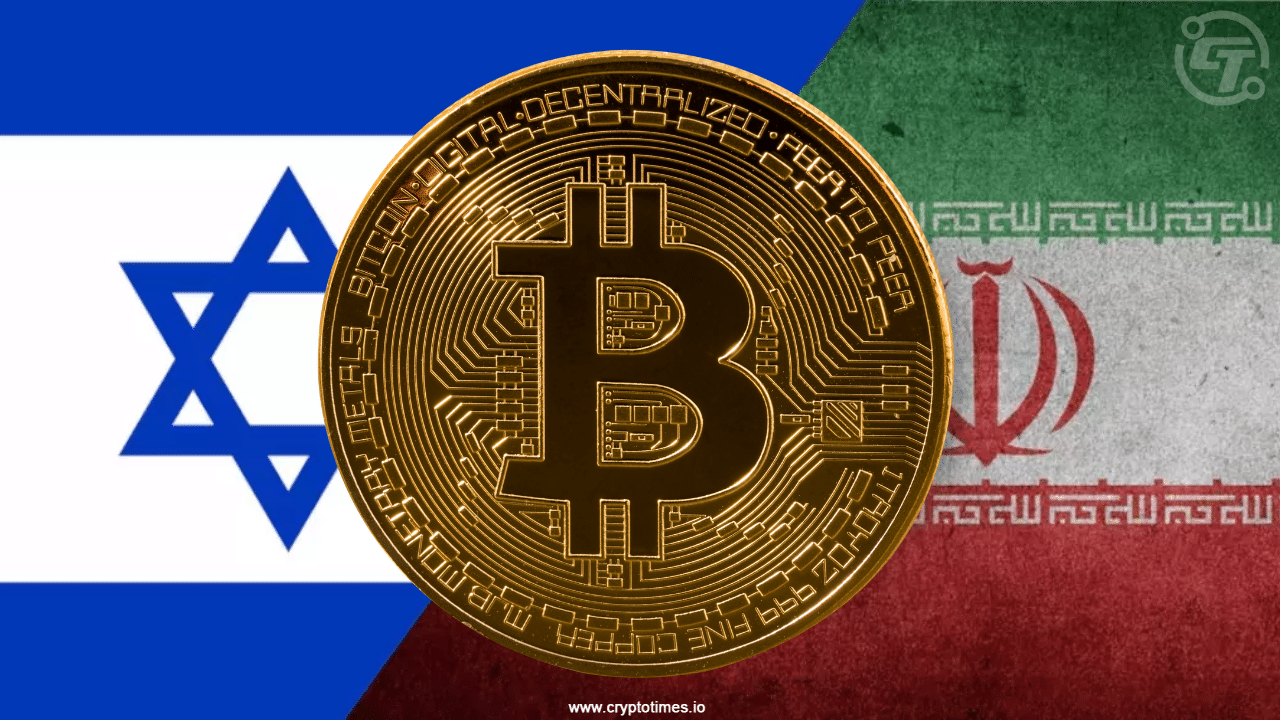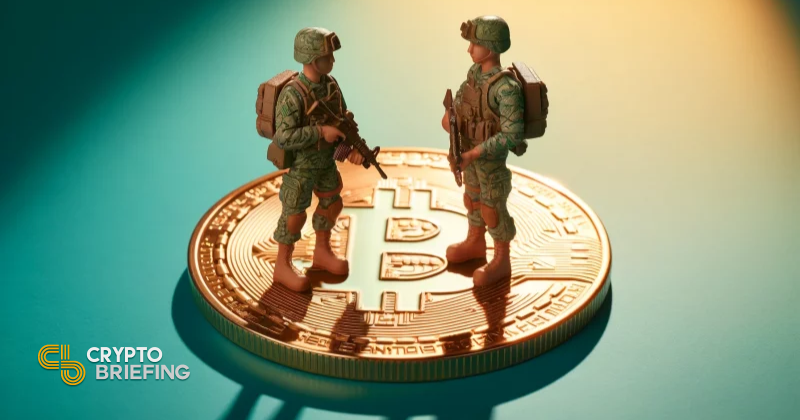Implications of the Israel-Iran Conflict on the Web3 and Crypto Space: Market Reactions and Historical Context

June 13, 2025
Market Shock Amid Escalating Geopolitical Tensions
Global crypto markets plunged today following reports of Israeli airstrikes targeting Iranian military infrastructure. The reaction has been swift and severe. Bitcoin (BTC) dropped 2% to $107,000 after briefly dipping to $102,800. Ethereum (ETH) slid 1% to $2,740, while Ripple (XRP) and Solana (SOL) both fell 4%, trading at $2.22 and $158 respectively.
Over $1 billion in leveraged crypto positions were liquidated within 24 hours, and the total crypto market cap shed approximately $140 billion—a stark example of the market’s “risk-off” behavior. Meanwhile, traditional safe-haven assets like gold and the U.S. dollar rose sharply, underscoring investor flight to perceived stability.
Bitcoin’s performance has reignited the long-standing debate over its status as “digital gold.” Critics, including Peter Schiff, argue that BTC continues to behave like a risk asset in moments of crisis. Yet others, like Blockstream CEO Adam Back, highlight Bitcoin’s post-crisis resilience and suggest that historical patterns favor a medium-term rebound, especially near key technical support levels such as the 50-day simple moving average (SMA). Today’s low of $102,800 aligns closely with that SMA, signaling a possible stabilization point.
Altcoins have seen even steeper losses, as expected during high-volatility periods. XRP and SOL have both experienced sharper drawdowns, reflecting their higher beta and speculative profiles. Ethereum’s more modest 1% decline may indicate stronger institutional conviction, particularly in its expanding Web3 ecosystem and the decentralized finance (DeFi) and NFT markets it anchors.
Technical Breakdown and Market Sentiment
Bitcoin’s dip to the 50-day SMA is significant, as this level has historically served as both a floor and springboard during periods of macro uncertainty. Analysts now debate whether this is a buying opportunity or the beginning of a broader retracement. Should the SMA fail to hold, a deeper correction toward $90,000 is on the table. However, continued accumulation by whales or institutional buyers could support a rebound in coming sessions.
Investor sentiment is currently cautious. Social media sentiment indicators show a spike in fear-driven messaging, and exchange outflows are increasing, suggesting cold storage accumulation. Nevertheless, liquidations in long positions continue to dominate, especially on altcoin leverage markets.
Stablecoins in the Spotlight: A Double-Edged Sword
Stablecoins such as USDT and USDC have seen increased trading volume amid the panic, often serving as a temporary haven when crypto markets drop. On-chain data shows significant inflows to exchanges in the hours following the airstrikes, as traders moved into stable assets. However, the crisis has also revealed vulnerabilities in the stablecoin ecosystem.
Concerns are growing about the regulatory and geopolitical risks associated with dollar-backed stablecoins. In particular, there is heightened scrutiny on Tether’s reserves, especially given historical questions about exposure to non-liquid or politically sensitive assets. If actors linked to Iran are found using stablecoins to evade sanctions or fund operations, regulatory crackdowns could intensify. This could destabilize the DeFi protocols that rely heavily on stablecoins as core liquidity and collateral instruments.
DeFi Under Pressure: Stress Testing the Infrastructure
The current geopolitical tension also exposes systemic risks within DeFi. Liquidity imbalances, cascading liquidations, and oracle manipulation are more likely in volatile environments. The April 2024 Iran-Israel incident saw Curve Finance experience a rapid imbalance in its ETH-related pools, requiring governance action to restore peg parity.
Protocols with significant exposure to leveraged lending, such as Aave or Compound, may face outsized risks as collateral values drop and liquidations accelerate. Delays in Layer 2 bridging during high-traffic periods further amplify risk, as users are unable to quickly rebalance or withdraw funds. Insurance protocols like Nexus Mutual could see increased claims or require clarification on the terms of coverage during geopolitical stress events.
The event serves as a reminder that DeFi platforms, while decentralized in structure, still carry interdependent risk factors that can be magnified during crisis conditions.
Historical Context: Crypto’s Reaction to Conflict
Understanding how crypto has previously reacted to major geopolitical events provides essential perspective on what may come next.
In October 2023, the Hamas attack on Israel triggered a brief but sharp sell-off. Bitcoin fell 8% to around $27,000, and the total market cap declined by 1.56%. However, the market quickly stabilized, partly because the conflict, while severe, did not immediately escalate into a broader regional war. The event also brought crypto into focus for both humanitarian and law enforcement applications. Israel froze wallets linked to Hamas, while local Web3 groups mobilized platforms to channel aid transparently.
In April 2024, Iran launched a barrage of missiles and drones at Israeli targets, prompting an immediate market reaction. Bitcoin plunged from $67,000 to $61,625, and Ethereum dropped below the $3,000 level. Within four hours, more than $720 million in leveraged positions were liquidated. The market quickly rebounded once Iran declared its operation complete and downplayed further escalation.
A few months later, in October 2024, a more prolonged market impact followed another Iranian missile attack on Israel. Bitcoin dropped 6% to $60,200 and total market cap fell by 3.29%. Solana and Ethereum also saw losses exceeding 4%. Interestingly, the Bitcoin ETF market recorded $242 million in outflows during the panic. Yet, BTC surged 80% to over $108,000 by December, supported by broader macro factors like U.S. election optimism and whale accumulation.
The Russia-Ukraine war in February 2022, while unrelated to the Middle East, offers important insights. Bitcoin initially dropped 10% after the invasion, yet rebounded quickly, even outperforming the S&P 500 within weeks. Moreover, the utility of crypto was highlighted when Ukraine received over $150 million in crypto-based humanitarian aid, bypassing traditional banking bottlenecks.
Institutional Strategy: Adjusting Exposure Without Exiting the Space
Institutional players are navigating the current crisis with measured caution. While many have reduced exposure to volatile altcoins, there is no evidence of full-scale exit from the crypto space. In fact, some institutional strategies are reallocating capital into BTC and ETH, trimming risk from the edges but maintaining core exposure.
During previous crises, institutional flows initially turned defensive but returned aggressively once macro clarity emerged. Analysts from Bitwise and ARK Invest have noted that Bitcoin often outperforms traditional assets in the medium term post-crisis. However, fund managers are now also factoring in regulatory and reputational risk, especially for products or protocols that could be entangled in geopolitical tensions.
Sovereign wealth funds from the Gulf region may slow their involvement in Web3 ventures if regional instability persists. That said, conflict could also accelerate the desire for crypto-based cross-border settlement systems that avoid reliance on SWIFT or dollar-denominated frameworks, especially as political risks rise in global banking.
Geopolitics as a Catalyst for Web3 Innovation
Geopolitical stress is not just a risk—it can also be a catalyst for innovation. Web3 technologies are often adopted out of necessity, particularly in environments where traditional infrastructure fails or is manipulated.
Decentralized storage solutions like IPFS and Arweave could become vital in preserving truth and transparency in war zones. Messaging tools built on decentralized protocols, such as Nostr or XMTP, offer communication channels resistant to censorship and surveillance. In the case of a humanitarian crisis in Iran or neighboring areas, smart contract-powered aid distribution systems could prove faster and more accountable than conventional NGOs.
These use cases extend beyond hype cycles and offer tangible, mission-critical solutions. The Web3 ecosystem has the potential to not only survive these periods of turmoil but emerge stronger by proving its real-world utility in times of instability.
Market Outlook: Between Volatility and Resilience
The trajectory of the crypto market will depend heavily on how the conflict evolves. If Israel’s strikes remain limited and Iran avoids a major retaliatory response, markets may recover, as seen after previous flashpoints. However, a broader regional conflict—especially one involving Hezbollah or triggering disruptions in the oil markets—could fuel inflation, tighten global liquidity, and further stress risk assets.
Investors should monitor key levels like Bitcoin’s 50-day SMA, whale activity, ETF inflows/outflows, and global central bank policy shifts. While the immediate response has been risk aversion, history suggests the crypto market is capable of strong rebounds—especially when institutional capital re-engages and macro tailwinds align.
Conclusion
The Israel-Iran conflict has delivered another major test for the Web3 and crypto space. Market volatility has returned with force, but so have discussions about decentralization, resilience, and the future of digital finance. Bitcoin and major altcoins are under pressure, and DeFi faces acute stress, yet historical precedent suggests that the market can recover—often stronger—after geopolitical shocks.
As global trust in centralized systems erodes during conflict, Web3’s promise of openness, autonomy, and borderless access may become not just appealing, but essential. Whether as a store of value, a communications backbone, or an aid delivery mechanism, the decentralized internet is likely to play a growing role in shaping financial and humanitarian responses to global instability.
References















Comments ()